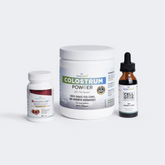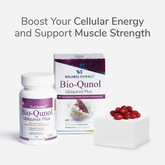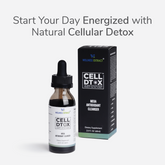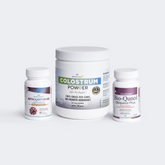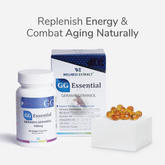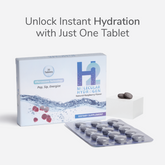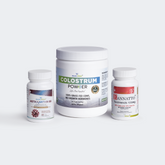Estimated Reading Time: 13 minutes
|Astaxanthin is considered one of the most potent antioxidants. It offers significant health benefits for both animals and humans. Scientists have discovered that astaxanthin provides "stronger antioxidant protection than other well-known nutrients. In this article, you will explore astaxanthin in detail, including its advantages, usage, and important considerations. We will also help you make informed decisions about your health.
Did you know astaxanthin is 6000 times more potent than Vitamin C, 800 times stronger than CoQ10, 110 times stronger than Vitamin E, and 5 times stronger than β-carotene?
|
Aspects |
Astaxanthin |
|
The ingredient is also known as: |
The king of carotenoids |
|
Available astaxanthin sources: |
Biosynthesized naturally from various sources, including algae, yeast, salmon, trout, krill, shrimp, and crayfish. |
|
Health Benefits: |
Astaxanthin is a potent antioxidant and has been scientifically shown to be beneficial for skin health, eye health, bone health, cardiovascular health, and cognitive health |
|
Ingredient discovered |
Richard Kuhn discovered astaxanthin in 1938 while studying lobsters as a source of pigment for aquaculture. |
What is Astaxanthin?
Astaxanthin (pronounced asta-ZAN-thin) is a red color pigment that belongs to a group of chemicals called carotenoids. It's a super-nutrient that comes from tiny sea creatures, like algae. It's the reason why flamingos, salmon, and shrimp are pink! They eat these tiny algae, and the color spreads through their bodies. It is also known as a xanthophyll carotenoid, a secondary metabolite naturally synthesized by microalgae, particularly Haematococcus pluvialis.
What is Astaxanthin Made From?
-
Natural source of astaxanthin:
Astaxanthin is biosynthesized naturally from various sources, including algae, yeast, salmon, trout, krill, shrimp, and crayfish. The study highlights that Haematococcus pluvialis, a type of microalgae, is the richest and the primary natural source of astaxanthin, containing the highest percentage of this powerful antioxidant, i.e., 81.38%, compared to other sources.
It is highly bioavailable, meaning the body can easily absorb and utilize it. Additionally, it demonstrated strong antioxidant properties, helping to neutralize harmful free radicals and reduce oxidative stress, which plays a key role in aging and various health conditions.
-
Molecular structure of Astaxanthin:
Astaxanthin has a unique molecular formula, C40H52O4, and a molecular mass of 594.84 g. Its chemical name is 3,3′-dihydroxy-4,4′-diketo-β-β carotene, which consists of two asymmetric carbons located at the 3′ and 3′ β-ionone rings.
-
Natural vs Synthetic Astaxanthin:
|
Features |
Natural |
Synthetic |
|
Source |
Produced by microalgae (Haematococcus pluvialis) |
Produced in laboratories using petrochemicals |
|
Chemical structure |
3S, 3'S form |
Contains a mix of 3S, 3'S, 3R, 3'R, and 3R,3'S forms, with a higher proportion of 3R,3'S. |
|
Bioavailability |
Higher |
Lower |
|
Antioxidant power |
6000x more potent than Vitamin C, 800x stronger than CoQ10, 110x more potent than Vitamin E, and 5x stronger than β-carotene Significantly less potent. |
Significantly less potent |
|
Safety approval |
GRASS approved |
Not classified as GRASS |
What does Astaxanthin do?
Astaxanthin is a potent antioxidant that helps protect cells from damage caused by free radicals and reactive oxygen. It protects cellular membranes and neutralizes free radicals in both water-soluble and fat-soluble areas of the membrane.
What are The Properties of Astaxanthin?
-
Antioxidant Properties:
Researchers consider astaxanthin one of the most potent antioxidants because it contains conjugated double bonds, hydroxyl, and keto groups.
These double bonds act as powerful antioxidants by donating electrons and reacting with free radicals, converting them to a more stable product and terminating the free radical chain reaction in a wide variety of living organisms. Astaxanthin also shows better biological activity because it links with the cell membrane from the inside to the outside.
Also read: What does an antioxidant do?
-
Anti-inflammatory properties:
Astaxanthin has anti-inflammatory properties that help neutralize free radicals and protect cells from damage. It also inhibits key inflammatory pathways, such as the NF-κB pathway, which is responsible for producing pro-inflammatory molecules like cytokines, and the COX-2 enzyme, which reduces pain and swelling.
Blocking these pathways helps reduce chronic inflammation without the side effects associated with synthetic anti-inflammatory drugs. Astaxanthin also helps protect mitochondria, the energy-producing structures of cells, from oxidative damage, which further reduces inflammation at the core.
What makes it different from other antioxidants?
It is considered a stronger antioxidant than other antioxidants because:
-
Astaxanthin helps protect the body from damage caused by free radicals. It does this by donating electrons to unstable molecules, making them more stable and stopping harmful chain reactions. This protective effect benefits many living organisms, including humans.
-
Astaxanthin is superior to other antioxidants because, thanks to its unique structure, it can work in both water and fat. It has one end that likes water and one end that likes fat, so it can protect entire cells, inside and out, including the brain and eyes.
-
Unlike some antioxidants that can become harmful in certain situations (called pro-oxidants), astaxanthin stays stable and safe, even under stress. That means it keeps protecting your cells without accidentally causing damage.
-
Scientific studies showed that astaxanthin is ten times greater than that of other carotenoids such as zeaxanthin, lutein, canthaxanthin, and β-carotene and 100 times greater than that of alpha-tocopherol.
-
It works better than many other antioxidants because it can connect with cell membranes from the inside and outside, providing better protection.
With its unmatched antioxidant strength, unique stability, special chemical properties, and broad-spectrum benefits, astaxanthin is one of the most powerful natural protectors of overall health and longevity.
What are The Health Benefits of Astaxanthin?
-
Skin Health: Restore and Revitalize from Within
Astaxanthin is one of the ultimate secrets for your skincare routine. It offers numerous skin health benefits, including:
- UV Protection: A randomized, double-blind trial was conducted on healthy men and women aged 20 to 60. The results indicated that astaxanthin may help reduce wrinkles and fine lines. It may also protect the skin from UV rays and improve skin elasticity.
- Improves skin elasticity: In 2021, a systematic review of clinical trials found that astaxanthin offers significant benefits for skin aging. The study showed that astaxanthin may help reduce wrinkles and fine lines and improve skin elasticity and hydration.
- Improves Skin Hydration: In 2017, a randomized clinical trial showed that regularly taking astaxanthin may help reduce oxidative stress, improve skin texture, and skin hydration in middle-aged adults.
- Anti-aging effects: The study highlights that astaxanthin may help in reducing oxidative stress, a key factor in aging and skin damage. It may also protect mitochondria, which is beneficial for skin health. It may help reduce wrinkles and improve elasticity and skin texture.
Summary:
Astaxanthin is a powerful skin-health booster. It reduces wrinkles, enhances elasticity, and maintains moisture. It nourishes the skin from within while protecting against aging factors, improving skin at all levels.
Also read: 8 ways to use astaxanthin for skin health
-
A Natural Solution for Better Eye Health
Astaxanthin is considered one of the most potent antioxidants, and a recent study shows it helps protect your eyes from damage. Let's explore the potential benefits of astaxanthin for the eyes:
- Reducing eye inflammation: A clinical trial with 40 participants over 12 weeks showed that taking astaxanthin can help reduce eye inflammation, protect the retina from damage caused by free radicals, and improve overall eye comfort and function. It may help support better eye health, especially as we age.
- Improving eye health: A 2022 study involving 60 participants over 12 weeks found that astaxanthin's antioxidant properties can help protect the eyes from oxidative damage and reduce inflammation.
-
Reducing eye fatigue: A study involving 60 participants showed that participants who consumed astaxanthin experienced improvements in visual function, which also helped minimize eye fatigue.
-
Improving eye dryness: In a randomized, placebo-controlled trial, 45 participants ingested 6 mg of astaxanthin orally over 4 weeks. The results found that astaxanthin helps in reducing symptoms of dry eye, including eye irritation and discomfort, by improving tear production and reducing inflammation.
- UV protection: A study found that astaxanthin lowers the incidence of macular degeneration and shields the eyes from the damage that prolonged exposure to blue light from screens can cause.
Summary:
Astaxanthin appears to boost blood flow in the eyes, particularly in the area responsible for our sharpest vision. It helps reduce symptoms of dry eye, eye fatigue, and inflammation and potentially supports better eye health.
-
A Natural Shield for Cardiovascular Health
Astaxanthin has been gaining attention due to its potential to support heart health. Let's explore recent studies that highlight its potential benefits for cardiovascular health.
- Reducing oxidative stress: A randomized controlled trial involving 60 participants showed that astaxanthin helps improve heart health, such as blood circulation, and reduces oxidative stress
-
Helping to Reduce Cholesterol: Astaxanthin helps lower bad cholesterol (LDL), total cholesterol, and triglycerides, all of which are related to heart problems.
-
Improving heart function: A pilot study involving 40 participants showed that astaxanthin improves heart function and blood flow.
-
Improving Blood Flow: A 2011 study involving 40 human participants suggests that astaxanthin helps improve heart health, including better blood flow, and also helps reduce harmful oxidative stress.
Summary:
Astaxanthin helps improve cardiovascular health by reducing cholesterol levels, improving blood flow, and potentially reducing oxidative stress.
-
Enhancing Neuroprotection and Cognitive Health:
Studies have shown that astaxanthin helps reduce inflammation and oxidative stress in the brain, both of which are linked to neurodegenerative diseases. Let's take a closer look at these studies in detail:
-
Fights neurodegenerative risks: A systematic review suggested that astaxanthin may protect the brain by reducing oxidative stress and inflammation.
-
Natural defense against TBI: A 2020 study suggests that astaxanthin may help protect the brain after a traumatic brain injury (TBI) and that it helps reduce oxidative stress and prevent brain cell death.
-
Improving cognitive function: A 2024 study of the human population showed that astaxanthin may help improve cognitive function and neurodegeneration.
Summary:
Astaxanthin may support brain health by reducing oxidative stress and inflammation, lowering the risk of neurodegenerative diseases. Studies suggest it can help protect the brain after injury and improve cognitive function. Recent research in 2024 also highlights its potential in slowing neurodegeneration.
-
Supports Bone Health and Joint Protection
Astaxanthin has shown potential in addressing concerns such as bone loss, osteoporosis, etc. Recent studies suggest that astaxanthin may play a significant role in supporting bone health.
-
Improving bone density: The study shows that astaxanthin may be beneficial in improving age-related osteoporosis by preserving bone mass and serum calcium/phosphorus levels and increasing bone mineralization rate.
-
Supports bone health: Researchers conducted the study with rats and found that astaxanthin could be beneficial for protecting bone health in people with diabetes and gum disease.
-
Enhancing cartilage repair: The study was done on rabbits with osteoarthritis caused by knee ligament damage. It has been found that astaxanthin may help improve the condition of the cartilage and also help produce matrix metalloproteinases (MMPs), enzymes that break down cartilage.
Also read: Astaxanthin and joint pain relief
Summary:
Astaxanthin may help improve bone density, support bone health in diabetes and gum disease, and aid cartilage repair. Studies suggest it preserves bone mass, enhances mineralization, and protects cartilage in osteoarthritis. Its benefits could be valuable for overall skeletal health.
How to Take Astaxanthin?
Astaxanthin is available in various forms, from naturally rich foods to convenient supplements. Here are some easy ways to include it in your daily routine:
-
Food sources: Eat foods like salmon, shrimp, fungi, trout fish, bacteria, adonis plants, and microalgae to obtain astaxanthin naturally.
-
Supplements: If you prefer a more convenient option, astaxanthin capsules are a great choice. Just take them with water, following the directions on the label.
When choosing an astaxanthin supplement, look for high-quality, GRASS-approved, free from additives and contaminants.
What are the Side Effects of Astaxanthin?
Astaxanthin is thought to be safe when used properly, but there are some side effects associated with astaxanthin highlighted in the study, which include:
-
Particularly when taking larger dosages, astaxanthin may result in moderate gastrointestinal discomfort such as bloating, diarrhea, or stomach cramps.
-
Astaxanthin may cause allergic reactions, particularly in those who are allergic to seafood.
-
Astaxanthin may affect hormone levels, but further studies are required to understand this possible side effect fully.
Since astaxanthin is usually thought to be safe for most people when taken in moderate levels, these adverse effects are often rare and mild. However, before incorporating any supplements into your regimen, it's always a good idea to speak with a healthcare provider.
Astaxanthin: The Growing Market Trend
Astaxanthin, a powerful antioxidant and anti-inflammatory compound, is widely utilized in various industries such as pharmaceuticals, nutraceuticals, cosmetics, and food and beverages.
According to Grand View Research, the global market for astaxanthin was worth $1.9 billion in 2022 and is expected to grow by 17.2% every year from 2023 to 2030. This spike in demand is a result of increasing interest in natural health remedies and the growing use of astaxanthin in skincare, anti-aging, and the prevention of chronic illnesses.
Wrapping It Up
Astaxanthin, a potent antioxidant, offers a range of health benefits. While the ongoing research continues to uncover its full potential, this blog explores its key roles and positive effects. With its remarkable potential and natural sources, astaxanthin can be a valuable addition to your health regimen.
Disclaimer: These statements have not been assessed by the FDA. The information contained within this page is for educational purposes only. It is not intended to replace the advice or care of healthcare professionals.
Frequently Asked Questions (FAQ)
Q1 What are the side effects of astaxanthin?
Astaxanthin is generally safe, but some people may experience mild digestive issues like bloating or diarrhea and, occasionally, hormonal changes. Those allergic to seafood may also react to it.
Q2 Is astaxanthin safe to take daily?
Yes, astaxanthin is safe for daily use when taken in recommended amounts, but it's always good to consult a healthcare provider first.
Q3 Which food has astaxanthin?
Astaxanthin is found in foods like shrimp, salmon, trout, and other seafood, as well as in microalgae.
Q4 Is astaxanthin good for eyes?
Yes, astaxanthin is great for eye health. It helps protect the eyes from oxidative stress, reduces fatigue, and supports overall vision.
Q5 Does astaxanthin raise cholesterol?
No, astaxanthin doesn't raise cholesterol. Studies suggest that it may help reduce bad cholesterol (LDL) and improve overall cholesterol levels.
Q6 How to tell if astaxanthin is real?
Cut open a capsule and squeeze a few drops into a cup of cooking oil. Stir gently—if the oil turns red as the contents dissolve, it's likely real astaxanthin. If the color doesn't change, the product may be fake.
Key Takeaways:
-
Astaxanthin is a powerful antioxidant that helps protect cells from oxidative damage and supports overall health.
-
Supports skin health by reducing wrinkles, improving hydration, and protecting against UV damage.
-
It helps maintain eye health, reducing inflammation and fatigue while improving vision.
-
Promotes heart health by improving blood circulation, reducing oxidative stress, and lowering bad cholesterol.
-
It boosts cognitive function and protects the brain from damage caused by oxidative stress and inflammation.
References






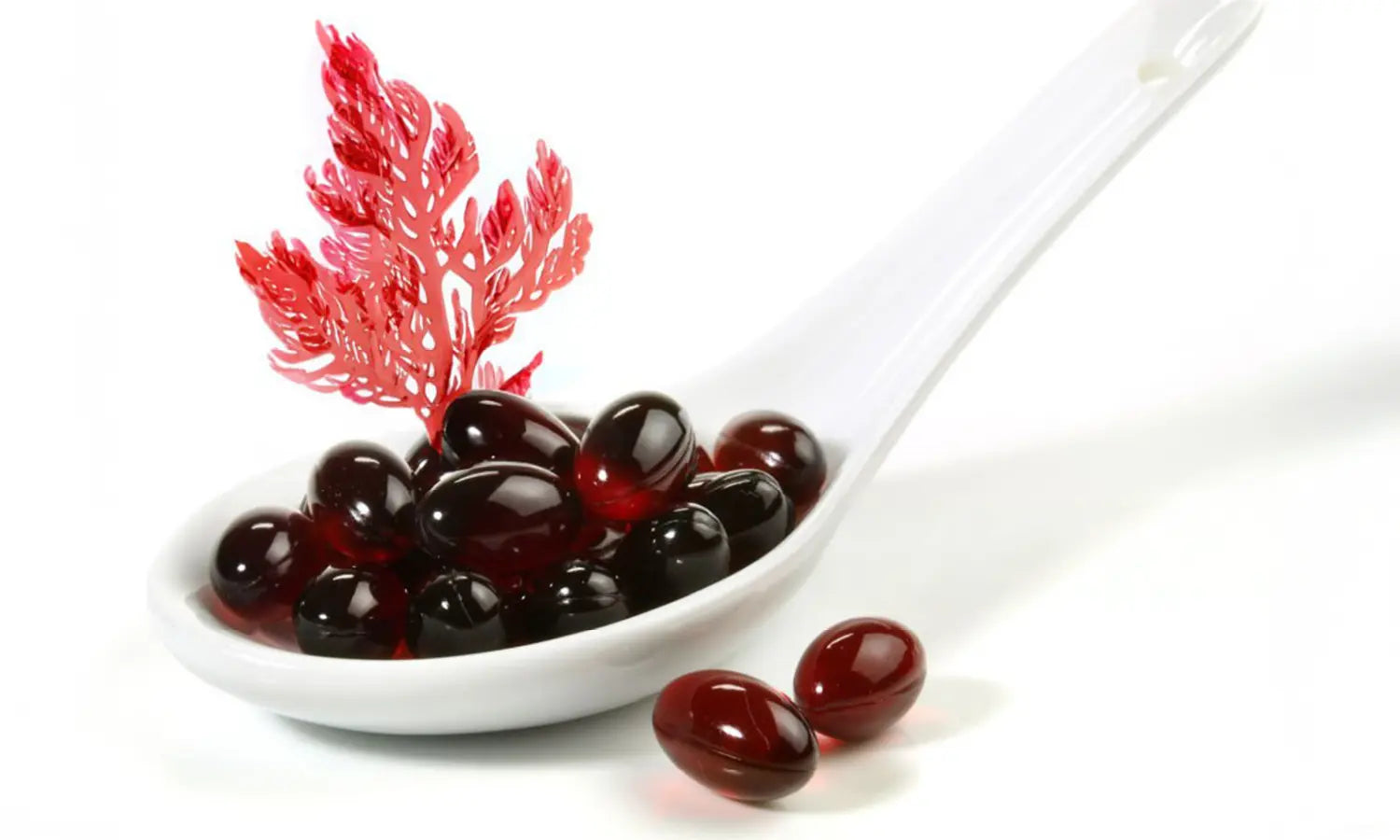







![Top 5 Best Vitamins for Men in Their 30s [Backed by Science!]](http://wellnessextract.com/cdn/shop/articles/Vitamin_for_men_8fe0fe21-19b1-4020-b895-dc104449637e_165x.webp?v=1765878148)






